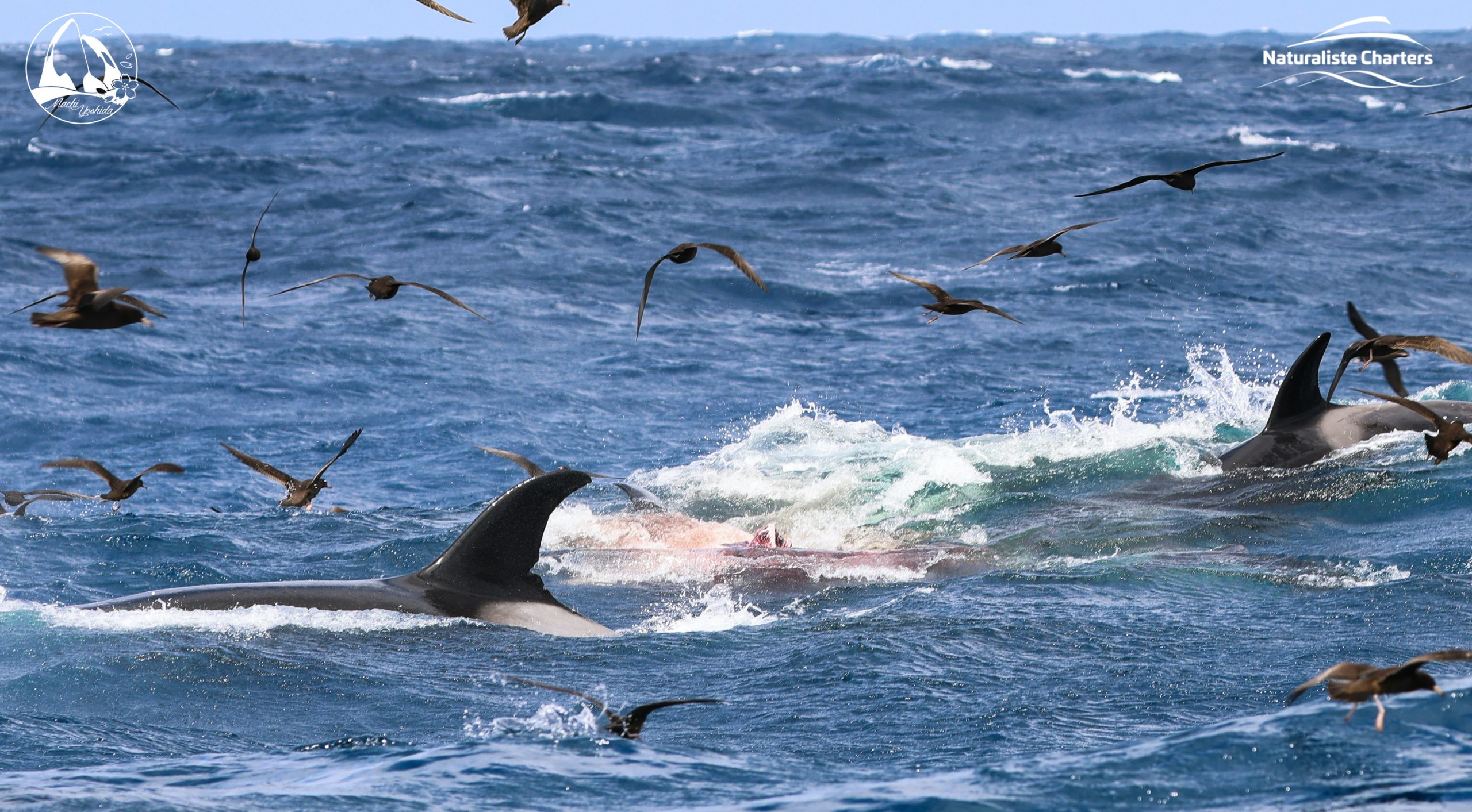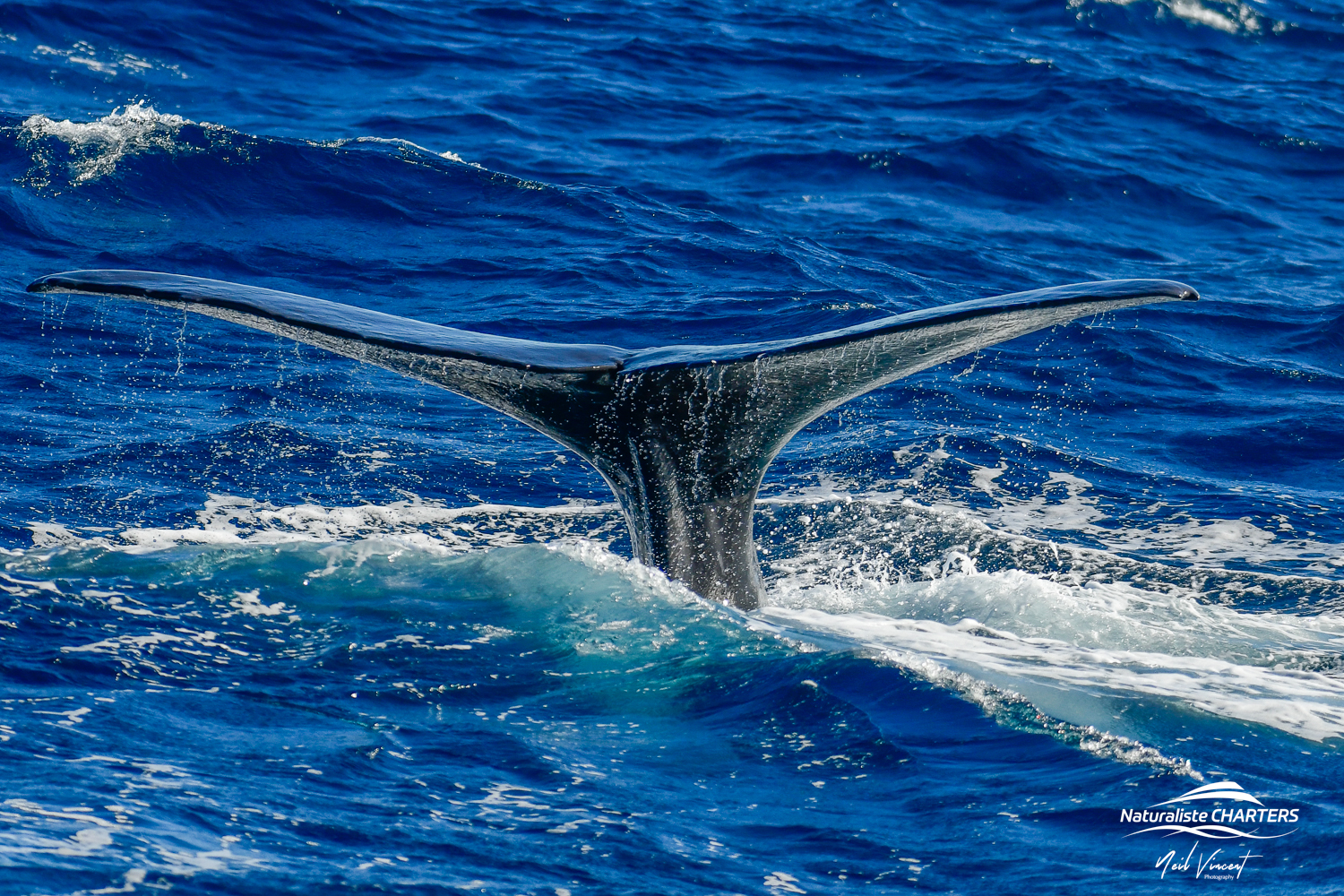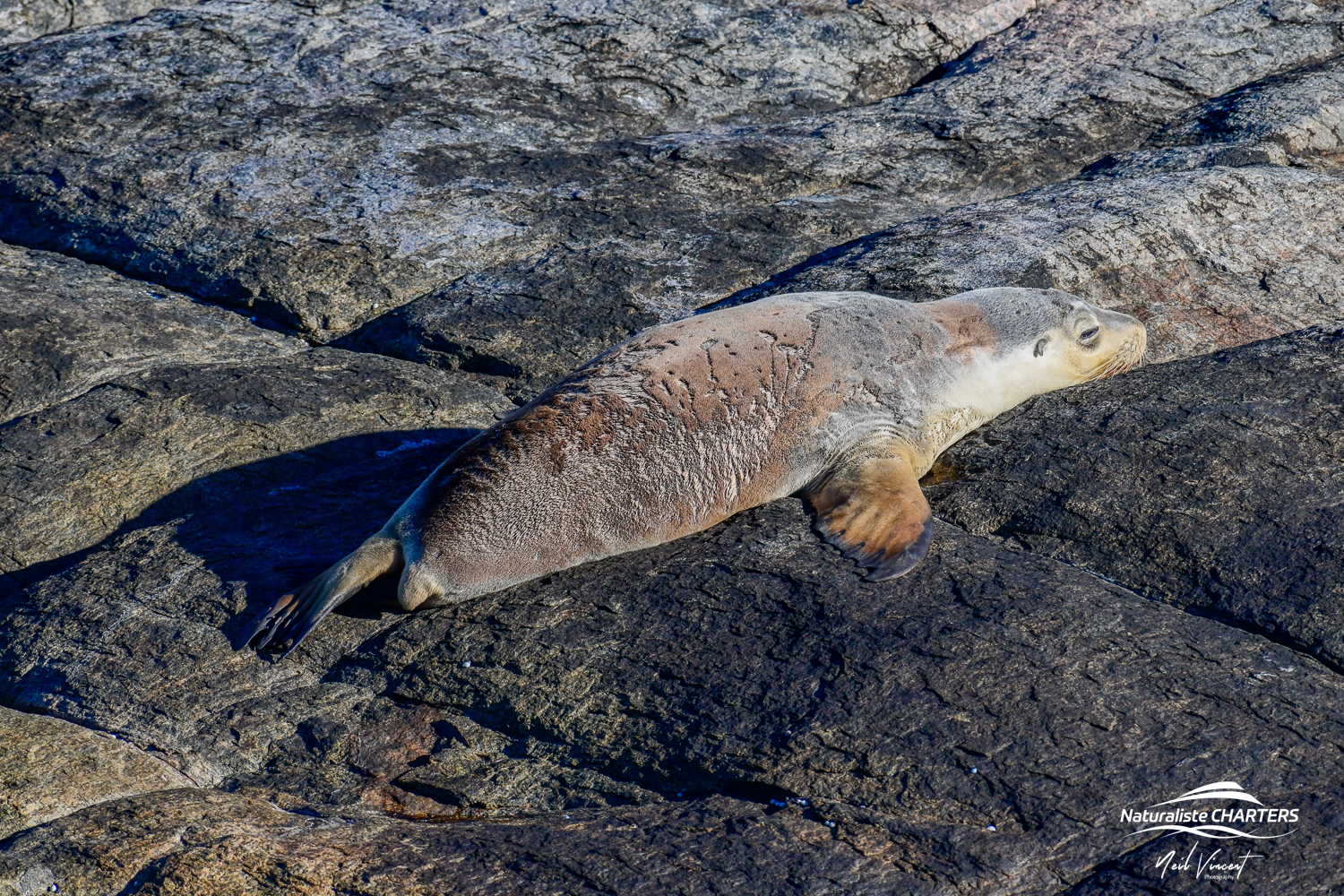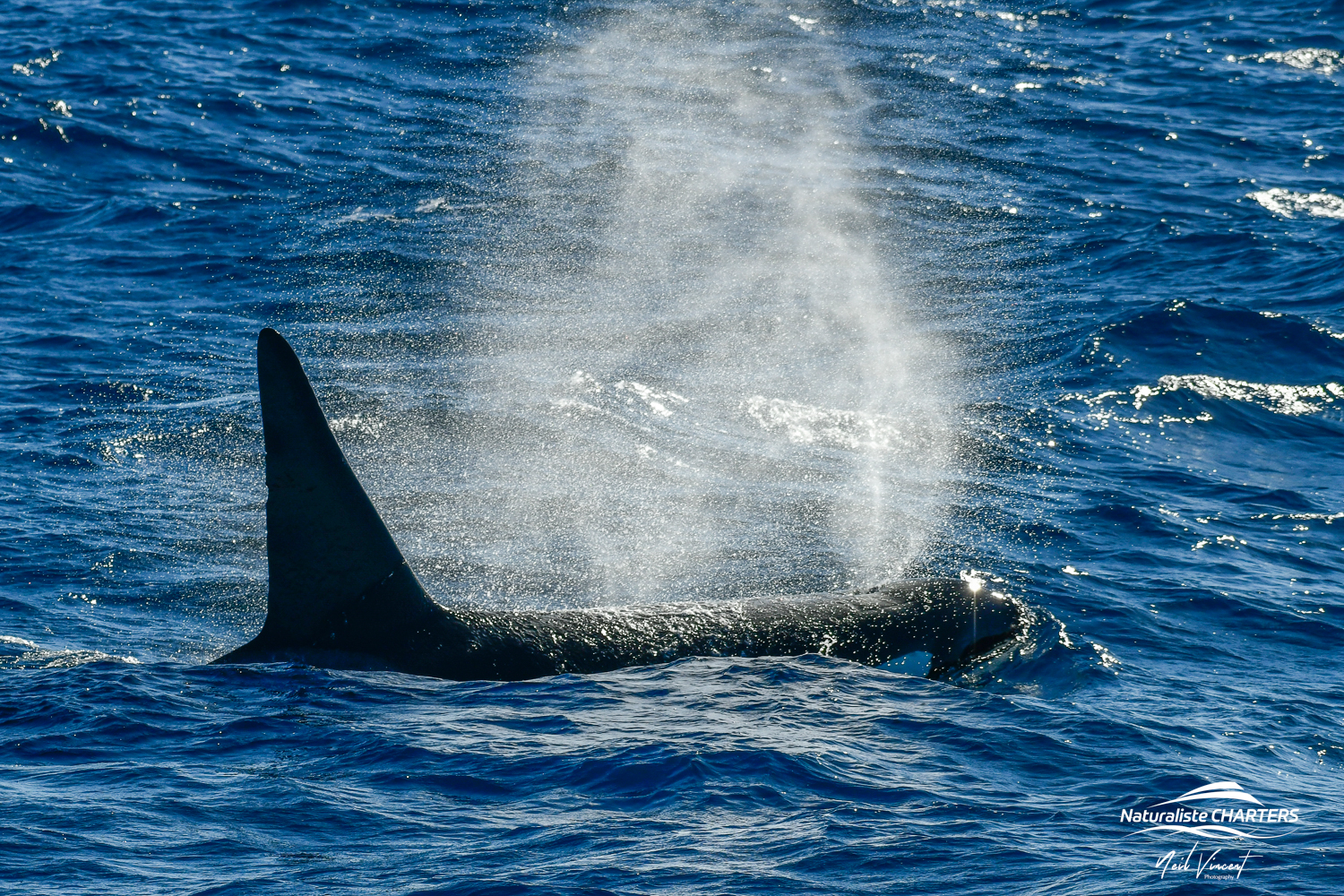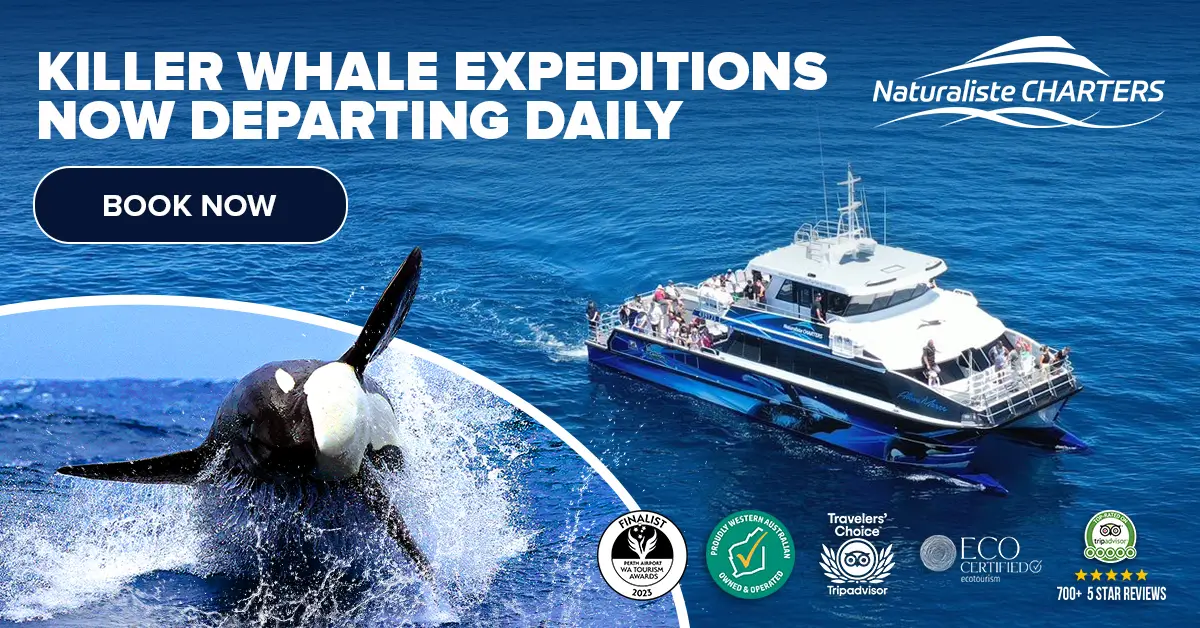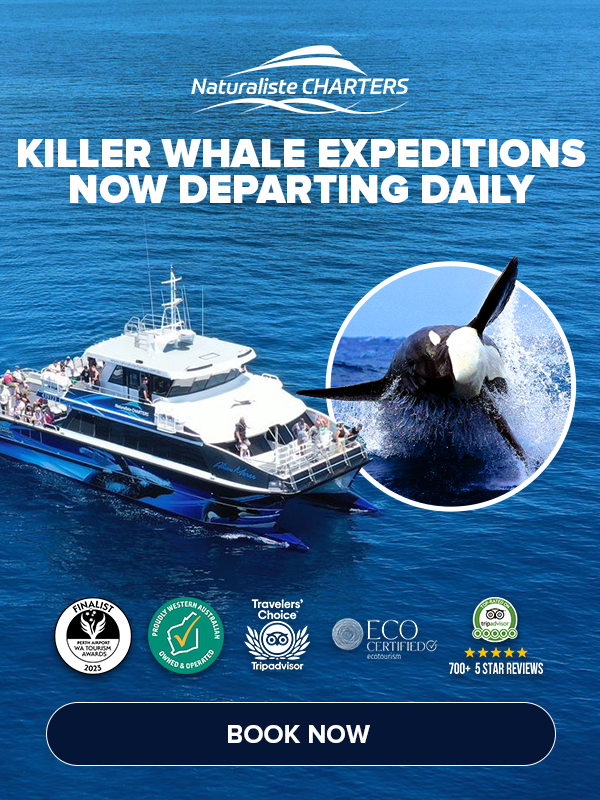What do Whales Eat?
Before we answer the question “what do whales eat”, we firstly need to describe what exactly a “whale” is!
“Whale” is a term commonly used for a subset of the mammalian order Cetacea. The term is inconsistently used for animals of vastly different sizes that are not closely related. For example, some will use it to describe the Great Whales (baleen whales) and the unrelated sperm whale. Others will use whale to describe the toothed whales which includes killer whales and other dolphin species such as bottlenose dolphins. The term is scientifically imprecise.
So what do humpback whales eat? And what do killer whales eat? For the purpose of this blog I will separate whales into two categories to show the diversity of diets among whale species:
– Baleen Whales
– Toothed Whales (specifically sperm whales)
As a group, whales prey on almost all trophic levels, from plants to invertebrates, to fish, birds and mammals. They also feed on a wide spectrum of sizes such as tiny microscopic crustaceans (1mm long) to giant squid (over 15m long).
Knowing what a whale eats is the basis of marine science and began many moons ago with someone looking into a whale’s stomach. Advancing technology has meant scientists can use a whole new array of sampling methods to gain insight into what’s in a whale’s gut!
The methods in which whales employ to actually feed is also just as diverse. Some will eat a huge number of prey items at once, while others will target a singular prey item. Some will also feed alone while others forage in groups.
So what do whales eat?
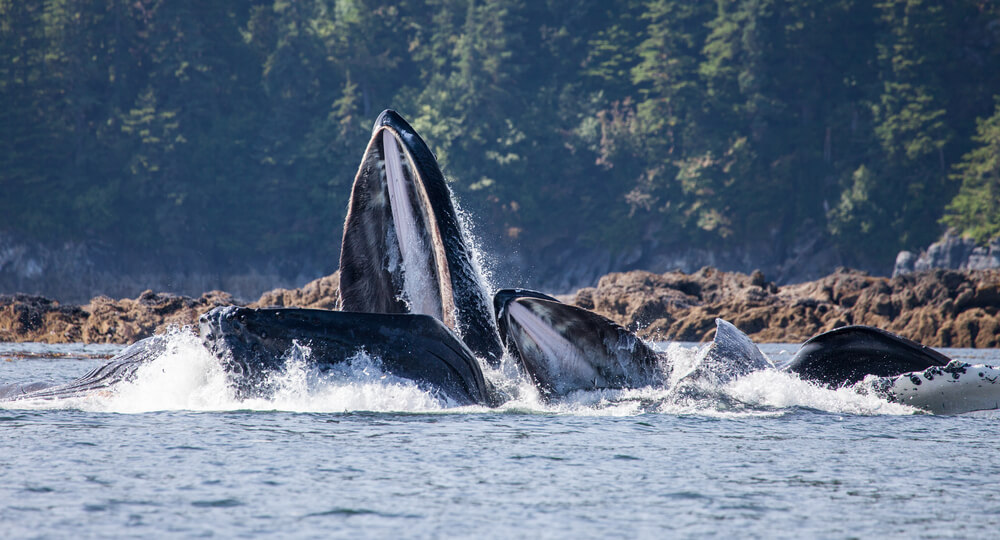
1. Baleen Whales (Mysticeti)
If we exclude gray whales, we see that the 13 other baleen whale species will skim or gulp water in the top 100m of ocean. Gray whales filter feed on benthic and epibenthic invertebrates, for example amphipods (in the category marine crustacean).
The other baleen whales will filter pelagic zooplankton (passive swimming animals), such as krill (shrimp-like planktonic crustacean) and copepods (microscopic crustacean), or feed on small nekton (active-swimming animals) such as fish and occasionally a few larger animals such as squid.
Size of the prey item generally correlates with the size and spacing of the baleen plates (keratin-structure similar to bristles). Blue, right and grey whales generally have the smallest prey size, while humpback, fin, minke and sei whales can eat larger prey such as fish.
The feeding tactics for baleen whales results in ‘batch feeding’ where a large number of prey items are consumed in a single feeding event. Three methods are skimming, engulfing and benthic suction.
– Skimmers, e.g. right whales, swim at the surface with their mouths open through zooplankton concentrations filtering water back out through their fine baleen plates.
– Engulfers include the rorqual whales, e.g. humpback whales and blue whales, which engulf water and prey into their mouth. Expandable pleats will allow more water to be held here and then they push the water back out through their baleen plates. Lunge feeding and bubble-netting are both examples.
– Benthic suction is solely reserved for grey whales. Grey whales are shallow water sediment-feeders, meaning they move along the seafloor stirring up the sediment and sucking in their prey.
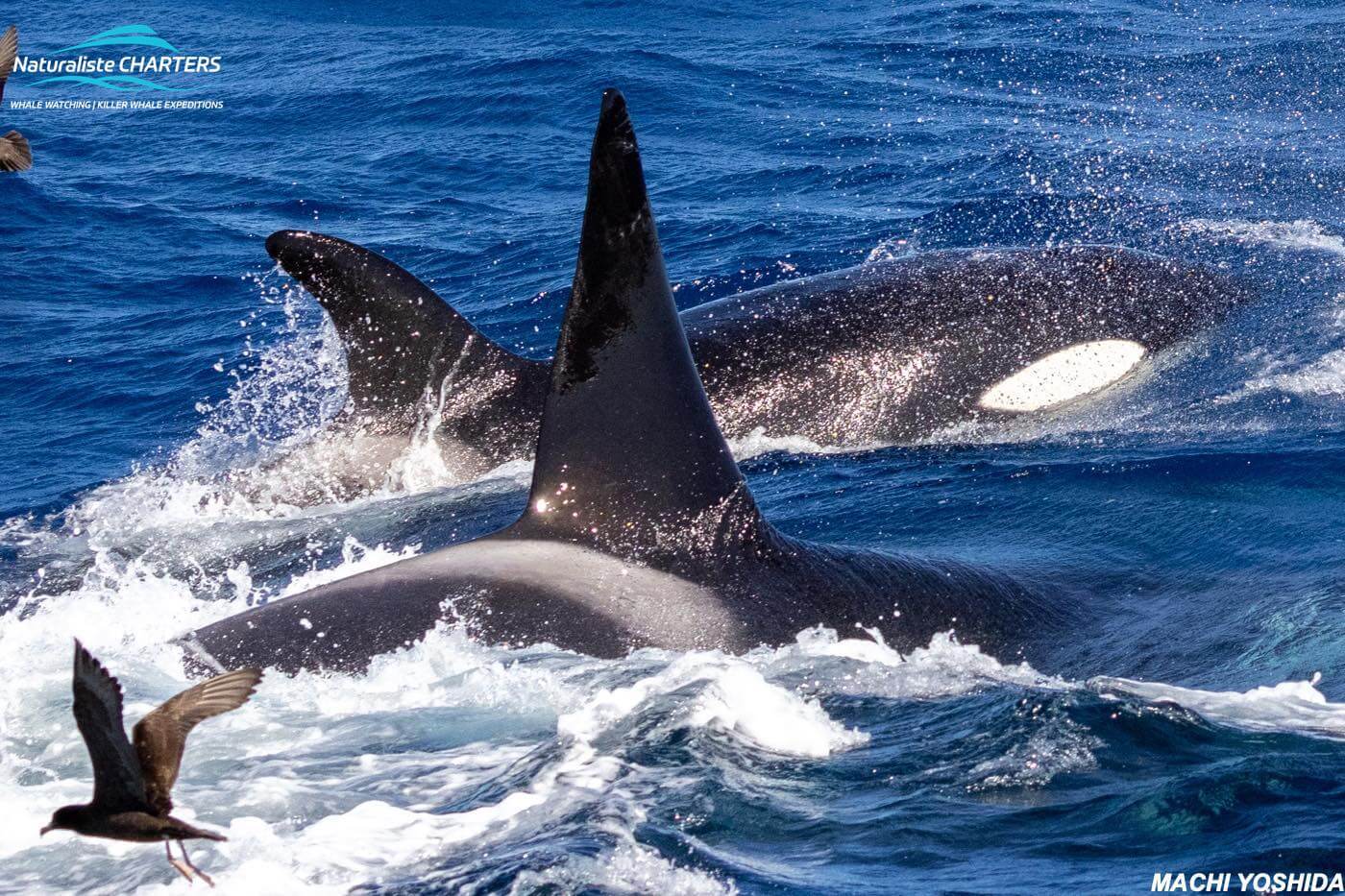
2. Toothed Whales (Odontoceti)
As a direct comparison to baleen whales who consume prey in large numbers, the 52 species of toothed whales will pick out individual prey items such as fish and squid. This results in a greater diversity of diet.
In coastal regions the diet includes pelagic, demersal, and benthic fish and also cephalopods (squid, cuttlefish, and octopus). Once out over the continental shelf toothed whales eat mainly pelagic and demersal fish and only some cephalopods. Some species such as killer whales will use their teeth and pincer-like jaws to capture larger animals such as marine mammals!
Toothed whales with reduced dentition (less teeth) such as sperm whales and beaked whales, will primarily feed on squid and are thought to be suction-feeders!
Toothed whales have a method of detecting prey which all other marine mammals lack – Echolocation! They can track down small objects over large distances. Through a series of clicks, the sound will refract off objects like schools of fish or the seafloor and bounce back to the whale. Without external ears, the sound has to hit the lower jaw and is amplified by fatty deposits which echo up into the inner ear canals. With advanced brains they can diagnose how far away, which direction and what the object is!
A sperm whale’s clicks sound like a metallic ball bouncing onto a table – very cool to hear!
As great as echolocating is, there are some limitations. The more external ocean noise there is, such as ships, the less effective the locating will be. Also when hunting mammal prey, the clicks can be heard by the mammal! Which means that their sneak attack is not so sneaky. For example, killer whales that hunt dolphins or other whales. The killer whales need to adopt other hunting methods to be successful.
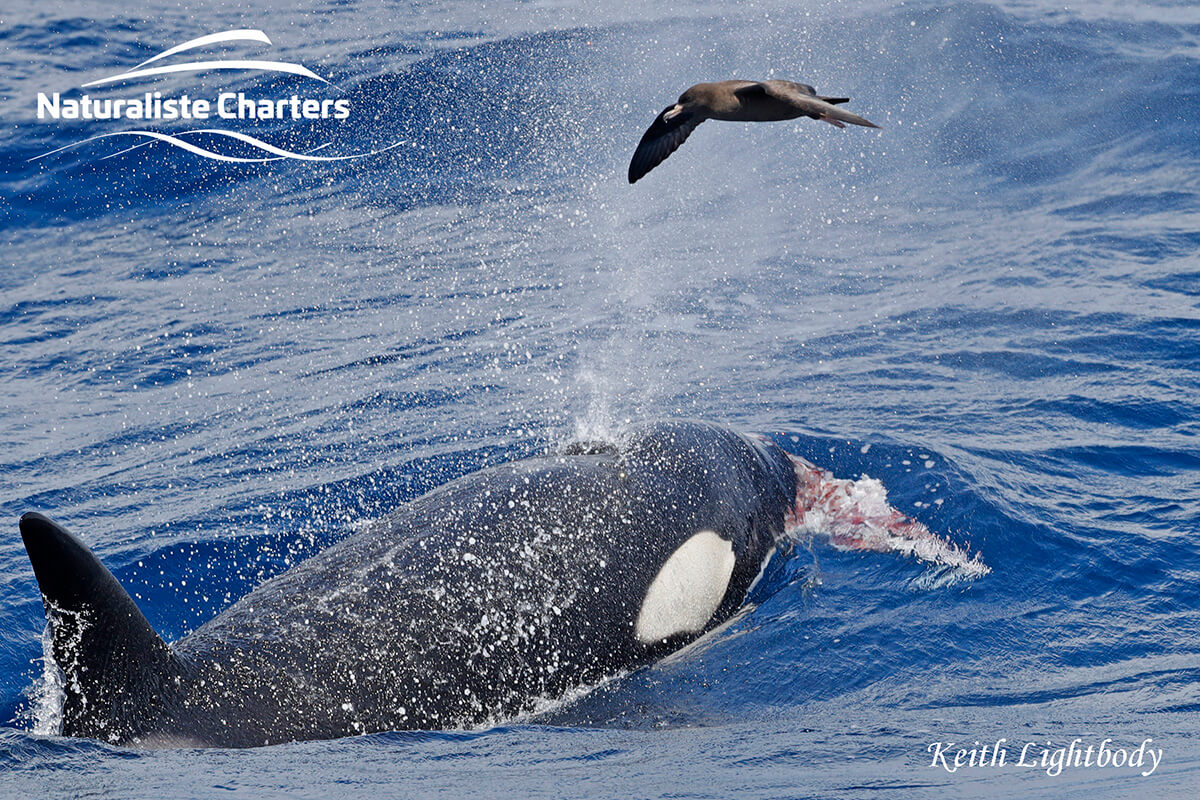
Would a whale eat a human?
Now you know exactly what whales eat, what about humans? Are we in any danger of being eaten if we go swimming?
Plain and simple – not intentionally.
Killer Whales are apex predators, with the intelligence to match humans and would be the only whale with the right diet to eat a human. However, there have been no records of attacks on humans in the wild. In captivity, there have been injuries and even deaths but this is due to the mental strain of being kept in small tanks and unnatural living conditions.
In recent times there was an unprecedented event where a diver was engulfed in the mouth of a humpback whale! The humpy was lunge feeding and the diver was in the middle of the bait ball. With only a small throat the whale isn’t able to swallow more than a large grapefruit-sized prey, which meant the diver wasn’t in any danger of being eaten alive. The diver was soon after spat!
To avoid any chance of being engulfed, you should go whale watching with the experts! A whale watching Australia company will take you out onto the water to see both Baleen and Toothed Whales. You may even get the chance to see them eating. During the humpback migration, when out in Augusta whale watching, the bay fills with bait fish! The whales will take the opportunity to have a quick snack and you may even get to see them filter-feeding!!!

